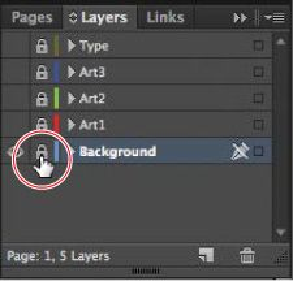Graphics Programs Reference
In-Depth Information
11.
Choose File > Save to save your work.
You've just learned a quick method for colorizing a grayscale image. While this method
works well for creating composites, you may find the color controls available in Adobe
Photoshop more effective for creating your final artwork.
Applying transparency settings
InDesign has extensive transparency controls. For example, by lowering the opacity of ob-
jects, text, and even imported graphics, you can reveal underlying objects that would other-
wise not be visible. Additional transparency features, such as blending modes, drop shad-
ows, feathered and glowing edges, and bevel and emboss effects, provide a wide range of
options for creating special visual effects; you'll learn about these additional features later
in the lesson.
In this part of the project, you'll practice using a variety of transparency features on several
objects that are placed on the various layers in the menu.
About the Effects panel
You use the Effects panel (Window > Effects) to specify the opacity and blending mode of
objects and groups, isolate blending to a particular group, knock out objects inside a group,
and apply a transparency effect.

